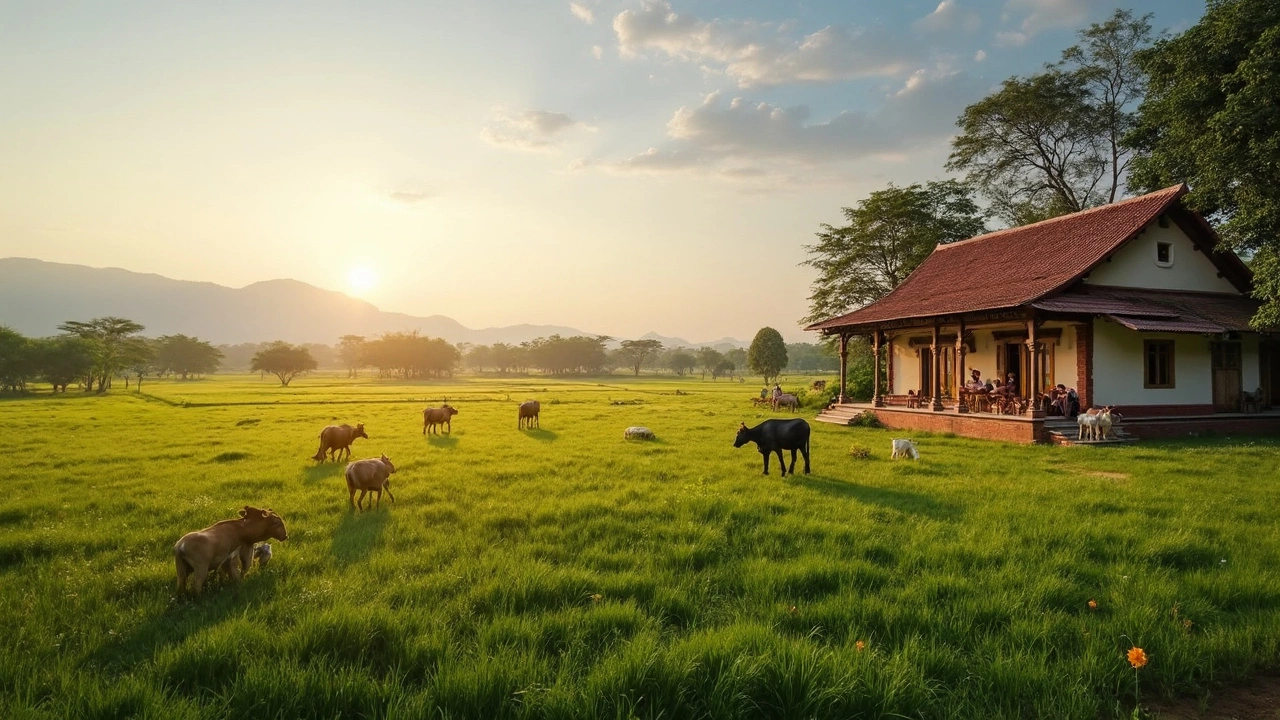Rural Property – Your Guide to Country Land and Farm Homes
Thinking about moving out of the city? Rural property offers space, fresh air, and a slower pace without breaking the bank. Whether you want a small farmhouse, a plot for farming, or a quiet plot to build your dream home, the right land can change your lifestyle. Here’s a quick rundown of what matters most when you start hunting for country land.
What to Look for in Rural Property
First off, check the land’s purpose. Some plots are zoned for agriculture, others for residential building, and a few for mixed use. Knowing the zoning saves you from legal headaches later.
Next, think about water. Is there a reliable well, a nearby river, or government water supply? No water, no living – simple as that. Also, look at road access. A paved road means easier construction and resale value, while a dirt track might need extra investment.
Soil quality matters if you plan to farm. Good soil holds nutrients and drains well. You can get a quick soil test from the local agriculture office – it’s cheap and worth the insight.
Finally, scope out nearby amenities. Even in rural areas, you’ll want schools, markets, or clinics within a reasonable drive. A location that’s too isolated can turn a dream into a daily struggle.
How to Buy Rural Land in India
Start with a clear budget. Rural land is cheaper than city plots, but you still need to account for registration fees, stamp duty, and possible development costs. Most banks offer agricultural loans, but the criteria differ from home loans – they look at land title, crop history, and your repayment plan.
Get a title search done. In India, land records can be messy, so a professional verification helps confirm the seller’s ownership and any existing liens. The local sub‑registrar office can provide a certified copy of the title deed.
Talk to the local governing body about any upcoming projects. New roads, irrigation schemes, or industrial zones can boost your property’s value, but they can also bring restrictions.
Don’t skip a site visit. Walk the land, talk to neighbors, and see the actual conditions. Online maps are handy, but nothing beats a real‑world feel.
When everything checks out, draft a simple sale agreement, have it notarized, and register it within 30 days. After registration, update the land records in the local land revenue department to reflect your name.
Ready to browse? Here are a few recent posts from our Rural Property tag that can help you dive deeper:
- How to Find Investors for Commercial Real Estate – Tips on raising capital, useful even for large farm projects.
- Best Soil in the US: Where Is It and Why It Matters for Land Buyers – A quick look at soil quality that applies to Indian farmland too.
- Good Cash Flow on a Rental Property: What You Really Need to Know – Learn how to turn a farmhouse into a steady income stream.
- Modern Villa Construction Costs: Real Breakdown & Key Factors in 2025 – If you plan to build a luxury rural home, this breaks down the numbers.
Rural property can give you space to breathe, grow food, or simply relax away from traffic noise. By checking zoning, water, road access, and soil, you’ll avoid common pitfalls. Follow the buying steps, keep paperwork clean, and you’ll be set to enjoy country life on your own terms.
Is 10 Acres Considered a Ranch? Size, Uses, and Buying Tips
by Arjun Mehta May 15 2025 0 VillasWondering if 10 acres counts as a ranch? Here's what you need to know about land size, how it's used, and if 10 acres fits the common ideas about ranches. Get tips on what you can do with 10 acres, from keeping animals to building your dream villa. We'll bust common myths about ranch sizes, give you real-world examples, and help you decide if 10 acres makes sense for your goals. Spot the difference between a ranch and other rural properties. Ready to see if 10 acres is enough for your ranch dreams?
READ MORE